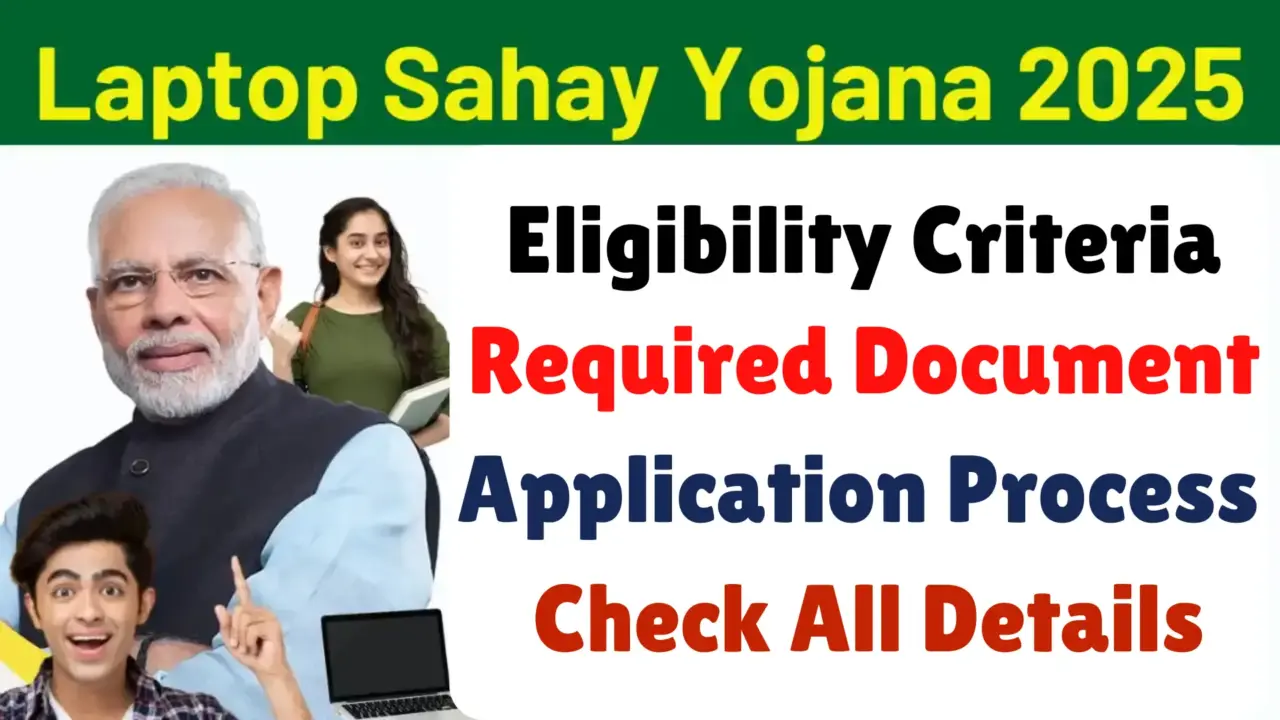The Laptop Sahay Yojana 2025 is an innovative initiative launched by the Government of Gujarat to promote digital education and empower students in the state. This scheme aims to provide financial assistance to economically weaker students, enabling them to purchase laptops for their educational needs. By offering this support, the government hopes to bridge the digital divide and ensure that all students have access to modern learning tools and resources.
The primary objective of the Laptop Sahay Yojana is to help students engage in digital studies and enhance their knowledge in the IT sector. With the increasing importance of technology in education, especially in the wake of the COVID-19 pandemic, having access to a laptop has become crucial for students to participate in online classes, access digital learning materials, and develop essential computer skills. This scheme recognizes the financial constraints faced by many families and seeks to alleviate this burden by providing affordable loans for laptop purchases.
Laptop Sahay Yojana 2025

| Scheme Name | Laptop Sahay Yojana 2025 |
| Launched By | Government of Gujarat |
| Objective | Provide laptops to students for digital education |
| Beneficiaries | Economically weaker students in Gujarat |
| Official Website | glwb.gujarat.gov.in/Laptop-Sahay-Yojana.htm |
| Loan Interest Rate | 6% |
| Repayment Period | 60 months |
Eligibility Criteria For Laptop Sahay Yojana 2025
- Permanent Residency: Applicants must be permanent residents of Gujarat state.
- Educational Qualification: Students who have completed their 12th class education are eligible to apply.
- Registration: Applicants must be registered under the Gujarat Labour Welfare Board.
- Age Limit: The scheme is typically open to students between 18 to 25 years of age.
- Income Criteria: The annual family income of the applicant should not exceed ₹1,00,000.
- Educational Institution: Students must be enrolled in a recognized educational institution in Gujarat.
Benefits of the Laptop Sahay Yojana 2025
- Financial Assistance: The scheme provides a loan of up to ₹25,000 to purchase a laptop.
- Low-Interest Rate: The loan is offered at a nominal interest rate of 6%, making it affordable for students from economically weaker sections.
- Flexible Repayment: Students have a repayment period of 60 months, allowing them to manage their finances effectively.
- Digital Empowerment: Access to a personal laptop enables students to participate in online education, research, and skill development programs.
- Career Enhancement: Having a laptop helps students prepare for future job opportunities in the digital economy.
Laptop Sahay Yojana Application Process
- Visit the official website of the Gujarat Labour Welfare Board.
- Look for the Laptop Sahay Yojana section and click on the application link.
- Fill out the online application form with accurate personal and educational details.
- Upload the required documents, including proof of residency, income certificate, and educational qualifications.
- Submit the application.
- Alternatively, students can also submit their applications offline at designated government offices.
Laptop Sahay Yojana Required Documents
- Aadhaar Card
- Proof of permanent residency in Gujarat
- Income certificate of the family
- Educational certificates (10th and 12th class marksheets)
- Caste certificate (if applicable)
- Passport size photographs
- Bank account details
- College ID card or admission proof
Loan Disbursement and Repayment
Once the application is approved, the loan amount will be disbursed to the student’s bank account or directly to the laptop vendor. Students are expected to start repaying the loan in monthly installments after a specified grace period. The repayment schedule is designed to be student-friendly, with a total repayment period of 60 months.
In conclusion, the Laptop Sahay Yojana 2025 represents a forward-thinking approach by the Gujarat government to address the technological needs of students in the digital age. By providing financial support for laptop purchases, this scheme is paving the way for a more inclusive and technologically advanced educational system in the state.

